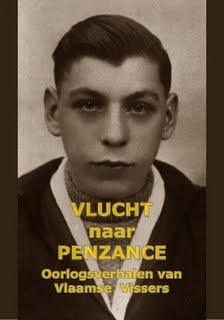 Aus Kunstmarkt.com - Germany
Aus Kunstmarkt.com - GermanySie war lange Zeit die einzige Kunst- und Antiquitätenmesse Europas, die im Sommer stattfindet, die Art Nocturne Knocke. Der Termin, immer im August, ist von den Veranstaltern klug gewählt. Knokke, an der belgischen Küste, unweit von Oostende, gilt als Belgiens mondänster Badeort. Hier macht nicht nur der betuchte Belgier Urlaub, hier findet man eine internationale Sprachenvielfalt und nirgendwo in Belgien so viele Nobelkarossen deutscher Herkunft. Selbst am Sonntag haben die zahlreichen Galerien, vor allem für zeitgenössische Kunst, geöffnet. Die meisten liegen entlang der Strandpromenade, wo die Flaneure nach anregenden Galeriebesuchen sich nicht scheuen, in den zahlreichen Restaurants mit Meeresblick für übersichtliche Tellergerichte horrende Preise zu bezahlen.Der Tag ist zum Flanieren gedacht. Von 16 bis 22 Uhr ist man eingeladen, im Kulturzentrum Scharpoord die Art Nocturne mit ihrem breiten, aber übersichtlichen Angebot an Antiquitäten, Schmuck, Asiatika und zeitgenössischer Kunst zu besuchen. 1976 debütierte die Messe im „Hôtel la Réserve“ auf Initiative der Vereinigung flämischer Antiquitätenhändler. Schnell entwuchs sie dem Hotel und zog ins Kulturzentrum um. 32 Jahre erfolgreich durch ein Marketingbüro organisiert, hat sie sich im belgischen Sommer unentbehrlich gemacht. Zusätzlich zum Messeprogramm werden Ausstellungen konzipiert und in den Kunstbetrieb integriert oder in den Außenbereich gesetzt, um auf die Messe aufmerksam zu machen. In diesem Jahr sind sowohl die Schau in der Messe als auch der Skulpturenpark entlang des Strandes dem Künstler René Julien vorbehalten. René Julien, Jahrgang 1937, Absolvent der Kunstakademie von Lüttich, widmet seine Skulpturen vorwiegend den Frauen und Kindern, die heiter das Leben genießen oder sich versonnen am Strand räkeln – Bronzen von unendlicher Sorglosigkeit.Hatte man in früheren Jahren die Mischung aus zeitgenössischer Kunst, alten Meistern, kostbarem Mobiliar und edlem Schmuck bevorzugt, bleiben seit einigen Jahren die antiken Stücke im Erdgeschoss. Die Moderne präsentiert sich nun im Obergeschoss. Das Konzept hat sich bewährt. So kann jeder nach seinem Gusto wandeln. Mehr als 50 Stände laden dazu ein. Libertas aus Brügge bietet Genremalerei des 19ten Jahrhunderts. Strandleben, Schiffe und Windmühlen in typischer Landschaft. Liebliches für die Wohnung am Meer. Die Galerie Chronos, ebenfalls im nahen Brügge beheimatet, bietet die Möbel dazu, meist aus der Zeit Louis XV, die passende Pendule aus der gleichen Epoche gibt’s auch. Zum ersten Mal nimmt Peter Hardt aus Radevormwald an der Art Nocturne teil. Er konnte schon am Eröffnungstag gute Verkäufe vermelden und freut sich über das starke Interesse an seinen tibetanischen Besonderheiten. Ein seltener Sattel, verziert mit geschnittenen Eisenumrandungen, ist ein Museumsstück. Er stammt aus dem 18ten Jahrhundert und soll 49.000 Euro erbringen. Ein ebenfalls seltenes Reliquienbehältnis mit reichhaltigen Inschriften aus dem 13ten oder 14ten Jahrhundert kostet 125.000 Euro. Zum gleichen Preis erhält man bei ihm einen ganz aus Sandstein gearbeiteten Buddha von nicht unerheblicher Größe.Aus Madrid ist Eufemio Diez Monsalve angereist. Die Galerie präsentiert ein grandioses Triptychon des flämischen Renaissancemalers italienischer Herkunft
Ambrosius Benson, das die Auferweckung des Lazarus darstellt, für 340.000 Euro. Bensons meist christlichen Darstellungen befinden sich in bedeutenden Museen dieser Welt. Selten taucht im Handel ein so herausragendes Stück auf. Meißner Porzellanfiguren gibt es bei Bob Shimanovich aus Berlin schon ab 1.200 Euro. 20.000 Euro muss man allerdings berappen, wenn sie einem Künstler der Meißner Manufaktur zugeordnet werden können. Chryselephantine-Skulpturen des Art Déco, wie zum Beispiel aus der Werkstatt des Odenwälders
Ferdinand Preiss, sind auf dieser Messe überaus begehrt und unter 24.000 Euro nicht zu haben.Auf die Suche nach den belgischen Malergrößen wie Rick Wouters,
James Ensor,
Felicien Rops oder
Léon Spilliaert, die in den vergangenen Jahren reichlich auf der Messe vertreten waren, begibt man in diesem Jahr beinahe vergeblich. Im Kunsthandel von Peter Pappot aus Amsterdam findet man einen Ensor von 1916 für 275.000 Euro, eine Arbeit von
Paul Delvaux von 1964 für 225.000 Euro oder die „Reiter auf der Pferderennbahn“ von
Raoul Dufy für 295.000 Euro. Dazu bietet die NF Art Gallery aus Berchem etwa
Théo van Rysselberghes in Pastell gemaltes Portrait „Renée Druet au violon“ von 1910 an.Im Bereich der Moderne dominiert bei Nico Koster - Galerie Moderne und Elisabeth den Bieman de Haas, beide aus Amsterdam, eine Sonderschau, die
Corneille zu seinem 85ten Geburtstag gewidmet ist. Hierzu gibt es ein 160 Seiten dickes Buch mit Farbfotos und Briefen von dem Vertreter der Künstlergruppe Cobra, während der Messe noch zum Subskriptionspreis von 99 Euro inklusive Versandkosten für Europa. Seine farbenfrohen Werke ziehen das Publikum magnetisch an. Ansonsten bietet dieser Bereich wenig Erbauliches, sieht man von Belgiens Superstar
Panamarenko ab, dessen skurrile flug(untaugliche) Objekte bei der Galerie Jamar aus Antwerpen das Publikum begeistern.
Die Art Nocturne Knocke hat bis zum 15. August täglich von 16 bis 22 Uhr geöffnet. Der Eintritt beträgt 10 Euro, Kinder bis 12 Jahren frei. Der Katalog kostet 10 Euro, zusammen mit dem Eintritt 17 Euro.
Kulturzentrum ScharpoordMeerlaan 32Knokke-Heist
http://www.artnocturneknocke.be/
 Vissers uit Newlyn gingen uit de kleren voor een nieuwe kalender die geld moet opbrengen om een groter visquotum te kopen.
Vissers uit Newlyn gingen uit de kleren voor een nieuwe kalender die geld moet opbrengen om een groter visquotum te kopen.



 IT was the worst single loss of life inflicted upon British forces in the whole of the Second World War and Britain's worst ever maritime disaster. It eclipsed the combined death tolls of the Titanic and Lusitania disasters but has remained largely forgotten by history.
IT was the worst single loss of life inflicted upon British forces in the whole of the Second World War and Britain's worst ever maritime disaster. It eclipsed the combined death tolls of the Titanic and Lusitania disasters but has remained largely forgotten by history.









